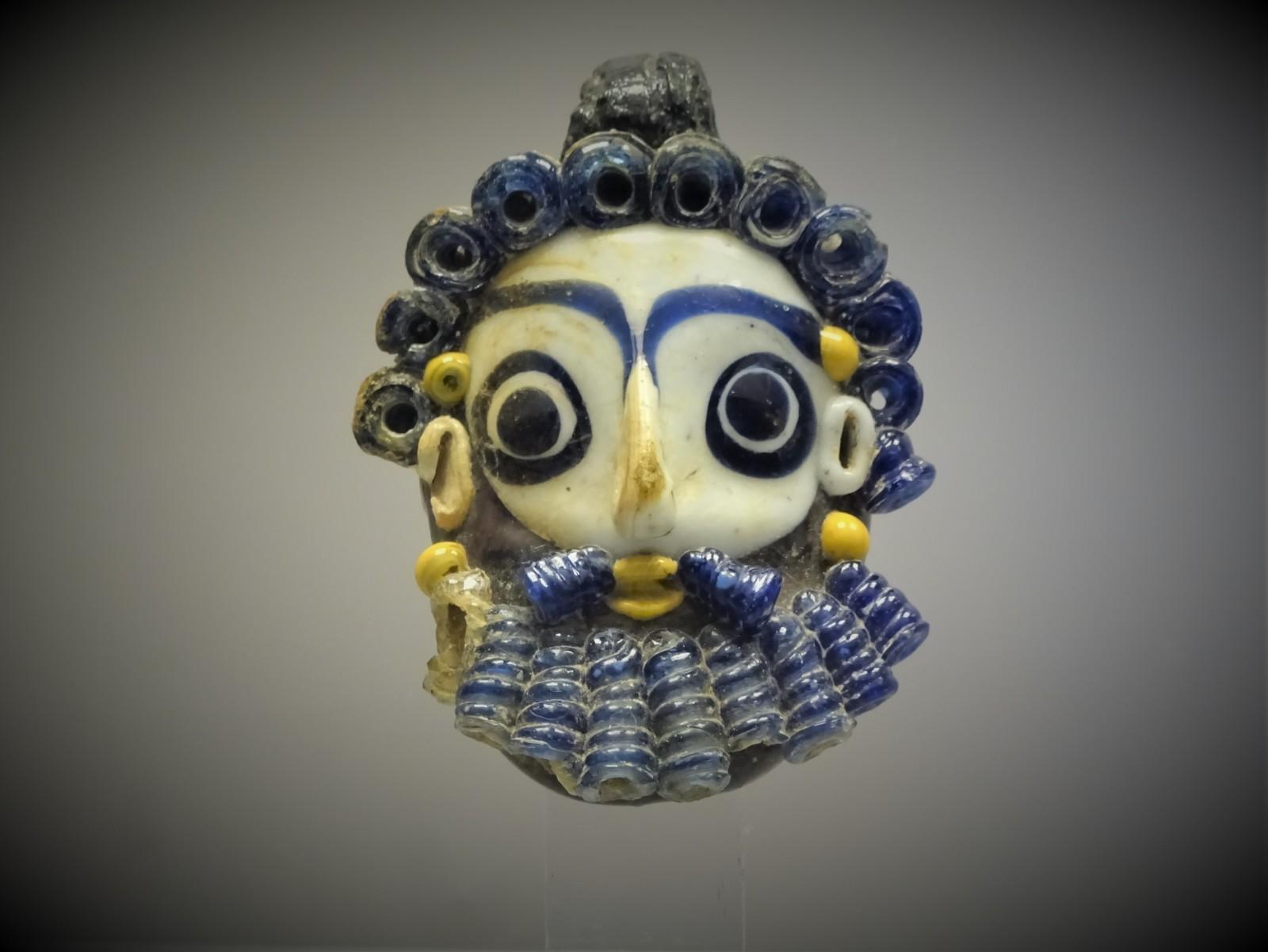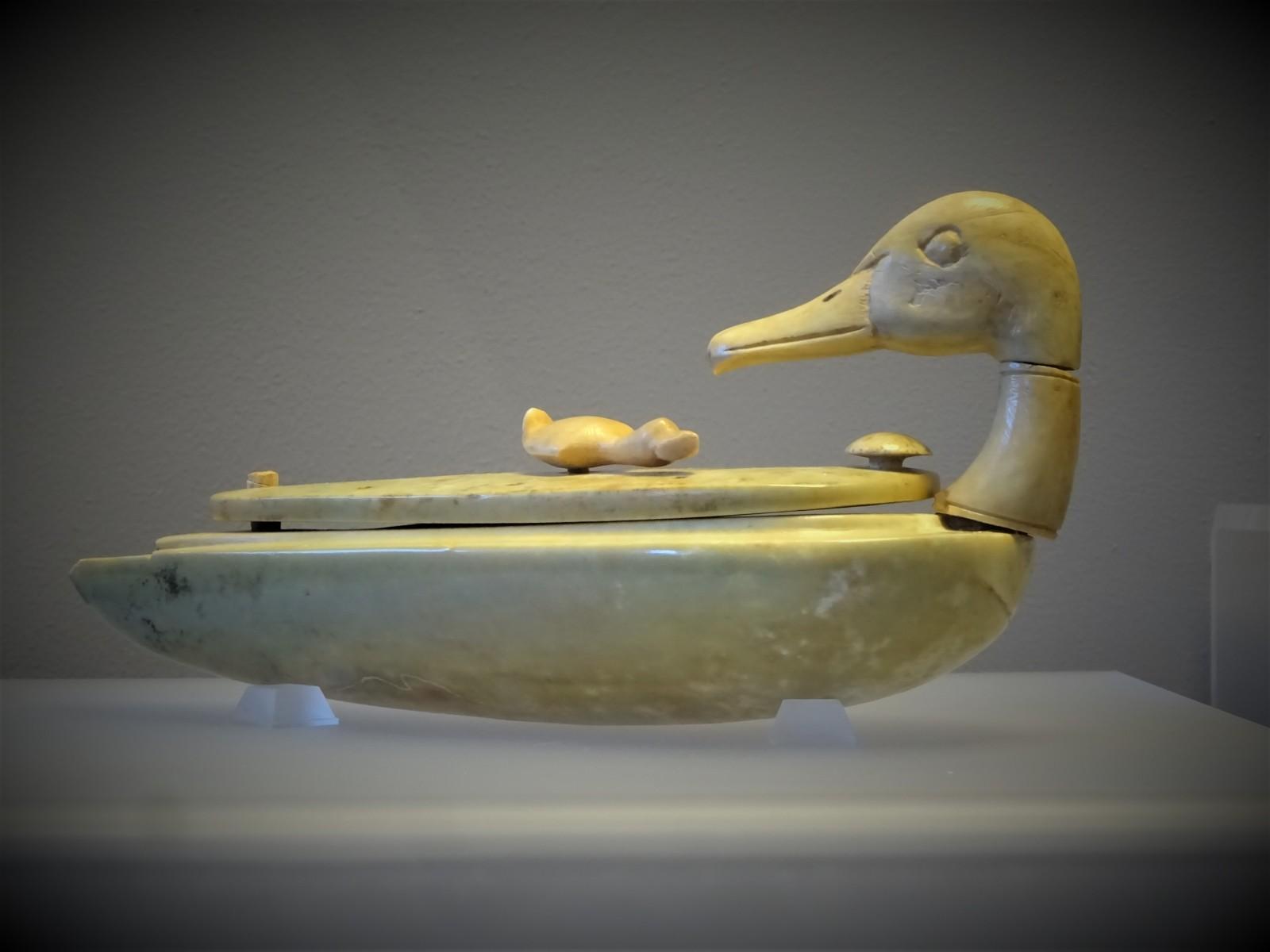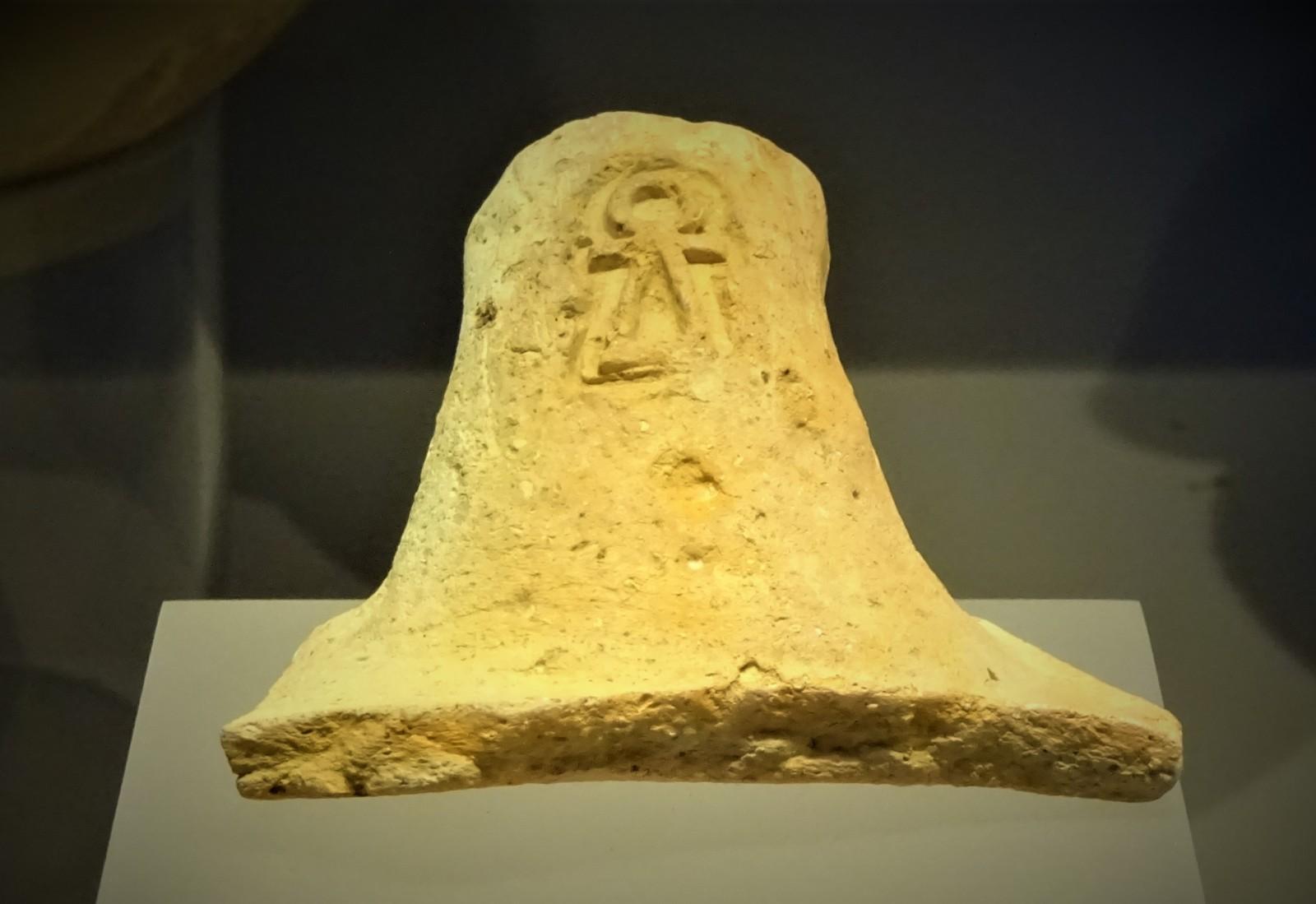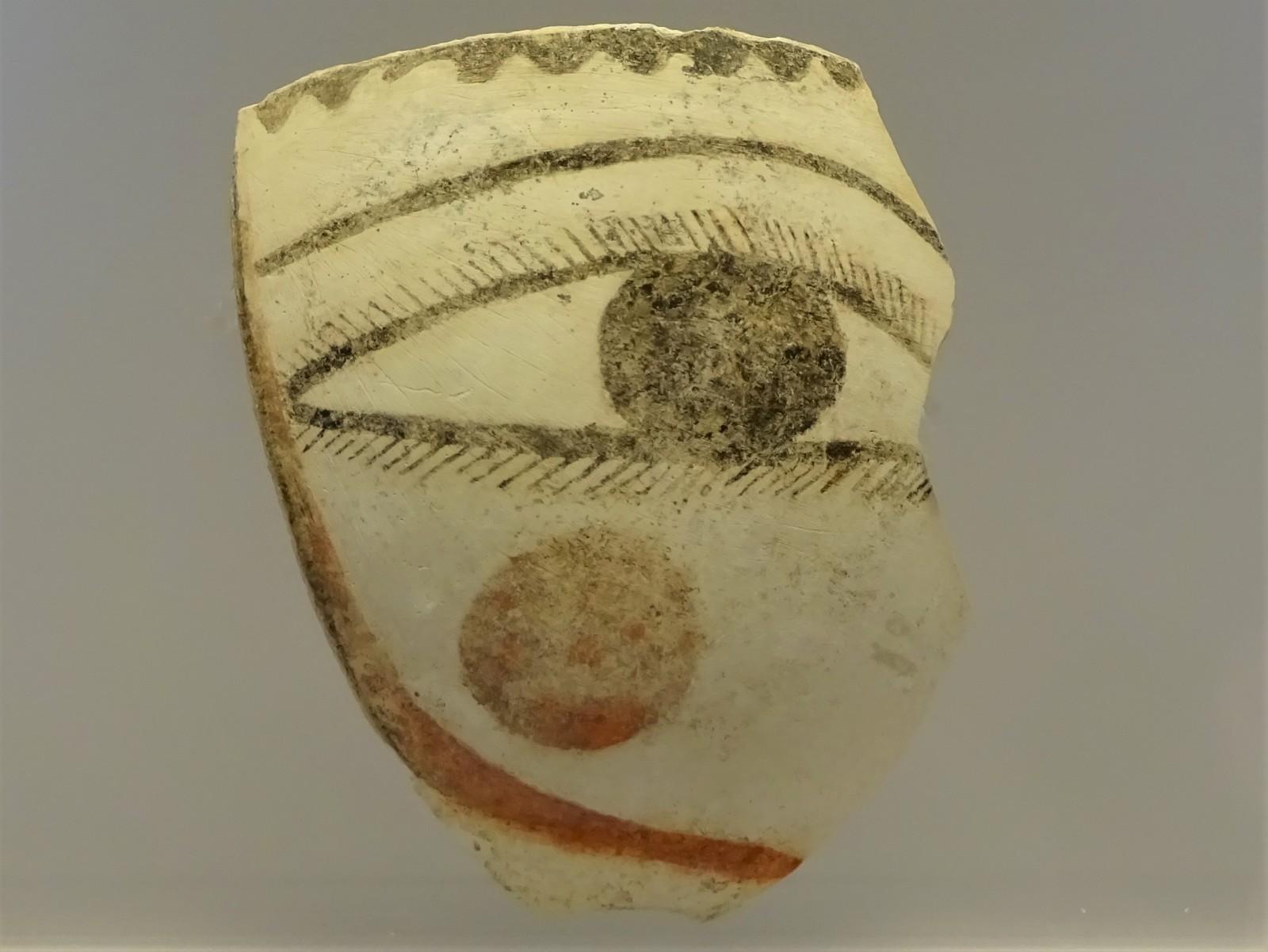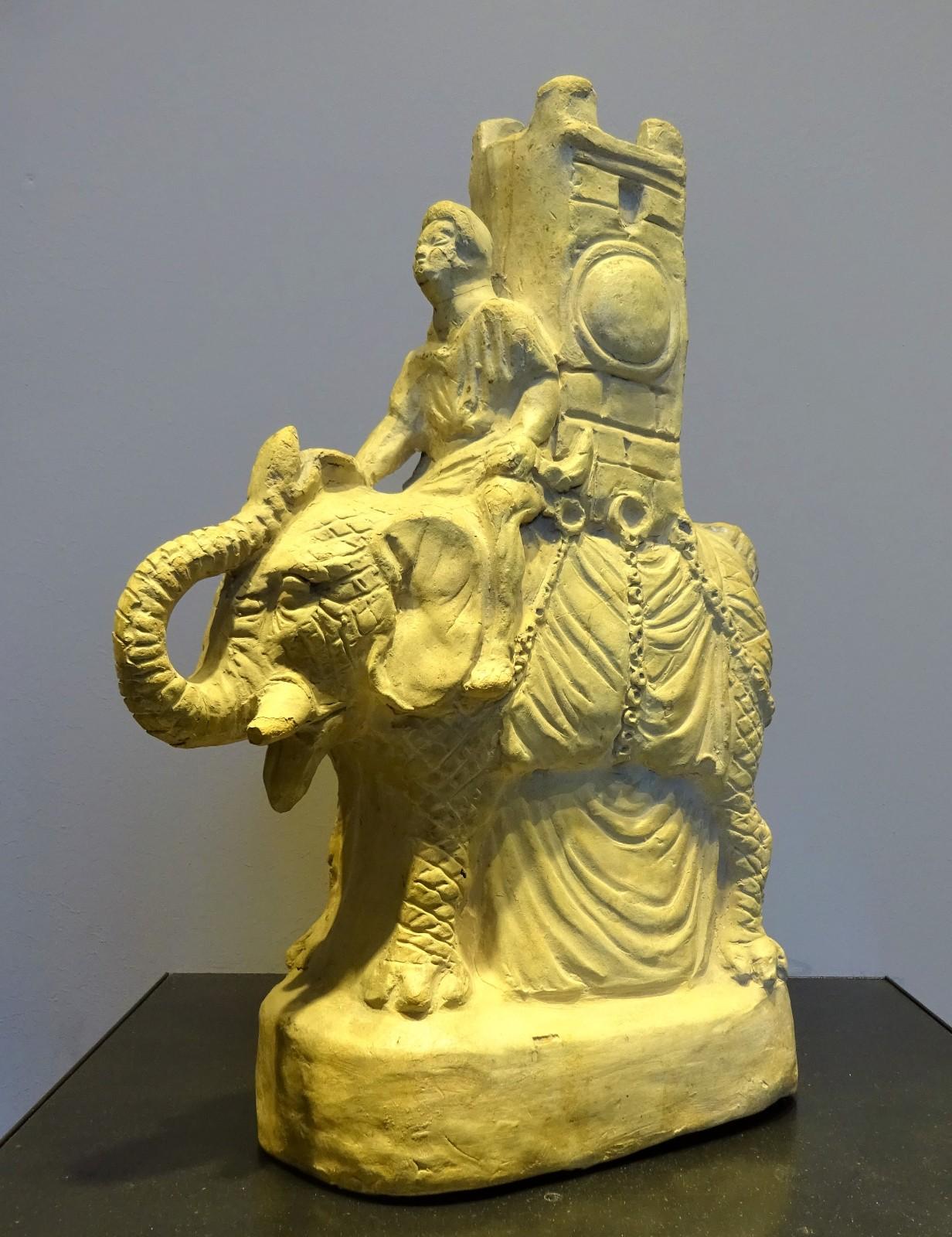Ideas of movement, of transporting people and objects, run throughout the exhibition. Carthage was in what is now Tunisia, but the Carthaginians were Phoenicians, a coastal people of the ancient Levant, and the city was founded by colonists of Tyre from present-day Lebanon. This origin story is represented through a selection of luxury items from Beirut’s National Museum, including an exceptional ivory cosmetic vessel in the shape of a duck from the 2nd millennium BC.
Carthage itself was likely founded in the late 9th to early 8th century BC, and within a few centuries appears to have become an autonomous regional power with a distinct culture. However, a continuing connection between Carthage and Phoenicia is shown by three funerary stelae found in Tyre, which describe their deceased subjects in Punic–the language of the North African colony–as ‘sons of Carthage’.




